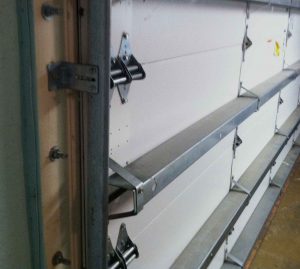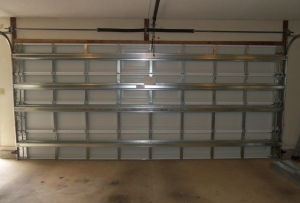Let’s talk basics first. When it comes to hurricane-prone areas, rated-to-resist garage doors will make all the difference between keeping or losing your home. Even if we are talking about storms, a wind-rated garage door will keep the home intact or keep damage to the minimum compared to a standard non-hurricane-resistant door that will be at the mercy of the winds.
Typical hurricane garage doors come with braces and particularly durable brackets, tracks, and other parts. Some are ready to protect, some must get ready when there’s a warning that a hurricane is approaching. While most hurricane-rated garage doors have similar features, they are not all the same – technically speaking. Their features depend on a number of factors, starting with geography.
It’s not a coincidence that each region in the USA has different building codes and guidelines. Not all areas get the same exposure. That’s true locally, too. Take, for example, a coastal home in comparison with a home found inland. The latter will likely suffer less damage compared to the coastal home. The structure also plays a role. A two-story home is more susceptible to damage than a one-story home and so it must comply with the wind codes.
Understanding the wind code rating for garage doors

The wind code ratings range from W1 to W9, with the former referring to one- or two-story homes that can withstand winds that run up to 90 mph and the latter to two-story buildings and higher that can withstand up to 150 mph winds.
While the resistance of the hurricane garage door to the winds is one major rating, another criterion that will define your decision when choosing a rated garage door would be the home’s exposure to the winds. As it is clear by now, whether this is a two- or one-story home makes a difference. But the garage door must also hold well under the pressure of the winds. And when it comes to that, not all situations are the same.
- At times, the winds are directed toward the garage door and thus it moves toward the house. This is known as positive wind pressure.
- If the opposite happens and the winds pull the garage door from the house, we are talking about negative wind pressure.
Which are the factors that determine the wind pressure? The wind direction, of course, and also the exposure and the location of the house. And so, when you get ready to buy a hurricane garage door, you must check with your local authorities and take into account the direction, exposure, and structure of the house. You must also know that the garage door pressure design is calculated in square feet.
Garage door design pressures
Up until recently, the garage door wind load design pressures were calculated based on the allowable strength design, taking into account the importance and safety factors. Then some things changed – or improved. The 2016 American Society of Civil Engineers Standard (ASCE) calculations were used in combination with another method, called Load Resistance Factor Design (LRFD) to determine the design pressures by using different data.
A new wind speed map was made – depending on the Texas coastal area, the type of the building, the structure, and the importance of the building, to determine how low or high risk an area – and by extension a building, is.
An impact-rated garage door can make a difference

It’s equally vital to understand that although severe damage may be inflicted due to wind pressure, the risks go beyond that. How about the wind borne-debris? And that’s where the significance of an impact-rated garage door comes to make a difference. These garage doors are designed to resist impact and tested to see how well they withstand impact.
And there’s more. How about the water left behind? Floods have occurred and may occur again in the future due to hurricanes. To minimize the risks, you don’t only need a hurricane garage door but also to make sure it is well sealed. You need to be sure there are no cracks, no gaps, no operational problems, no rot, no rust, no loose hinges, no damaged brackets – nothing that will allow the garage door to give way and water to find its way in. If you see any signs that worry you, you’d better get them fixed now and before it’s too late.







